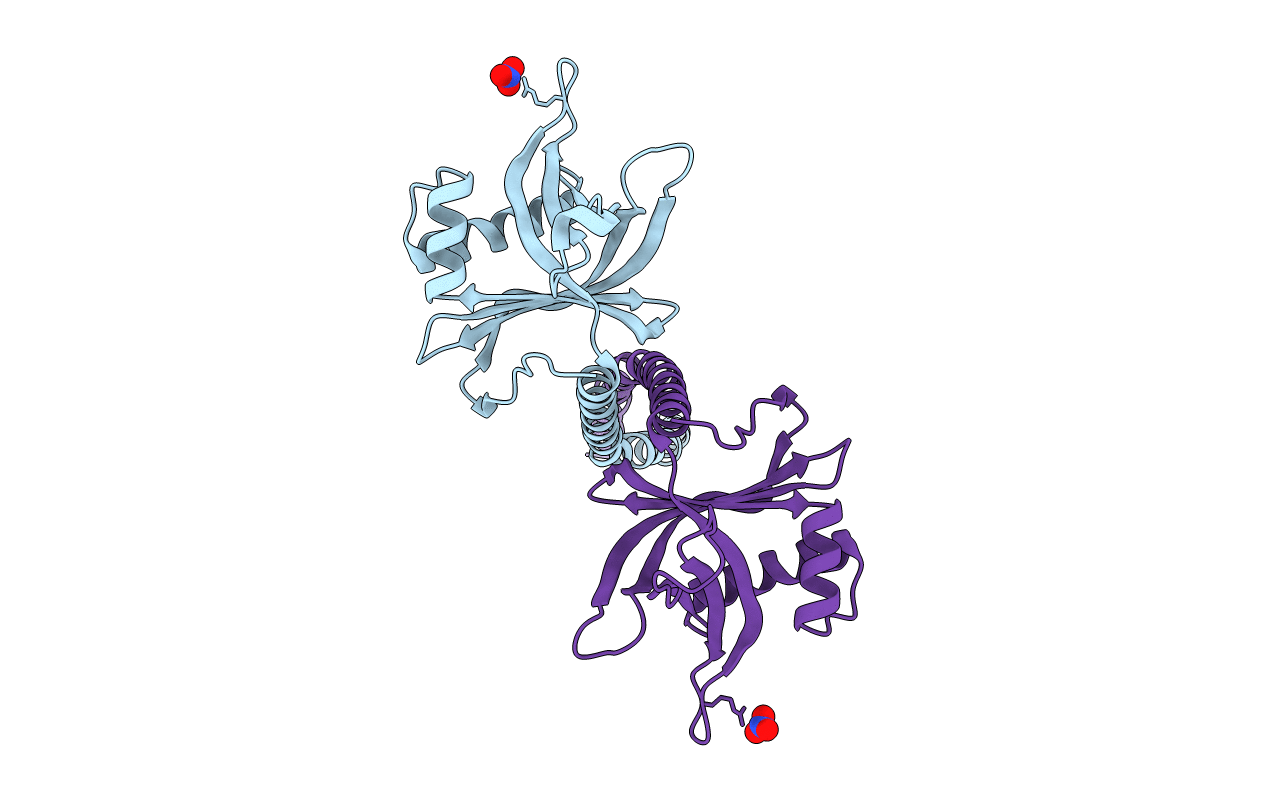
Deposition Date
2015-03-06
Release Date
2015-06-03
Last Version Date
2024-01-10
Entry Detail
PDB ID:
5AL7
Keywords:
Title:
N-terminal fragment of Drosophila melanogaster Sas-6 (F143D), dimerised via the coiled-coil domain.
Biological Source:
Source Organism:
DROSOPHILA MELANOGASTER (Taxon ID: 7227)
Host Organism:
Method Details:
Experimental Method:
Resolution:
2.92 Å
R-Value Free:
0.21
R-Value Work:
0.18
R-Value Observed:
0.18
Space Group:
P 1 2 1


